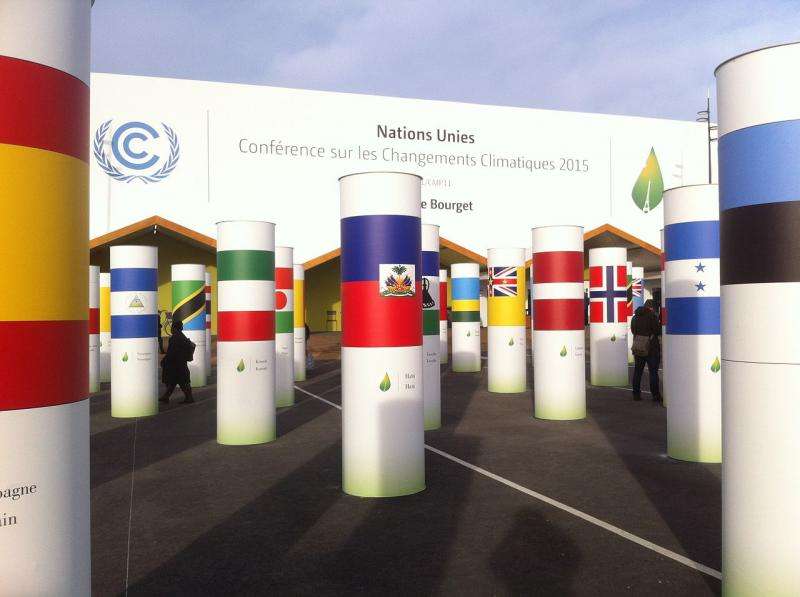Researchers call for stricter measures to reach climate targets

On Friday 4 November, the global climate deal from Paris in 2015 comes into effect. On the same day, 94 of 197 parties have ratified the legally binding Paris Agreement that obliges them to contribute to a reduction in greenhouse gas emissions and to stabilise the average global temperature under 2 degrees Celsius. However, the suggested measures are not still enough, says researchers from Umeå University.
"The Arctic is built upon sensitive systems and for example thawing permafrost and melting ice doesn't just affect the local surrounding, but the entire planet. A huge problem at the moment, is that the countries' undertakings presented in the Paris Agreement are not enough to even reach the target of 2 degrees," says Jan Karlsson, director of the Climate Impacts Research Centre (CIRC) and professor in Physical geography at the Department of Ecology and Environmental Science at Umeå University.
In December 2015, the world's countries agreed on a climate deal to come into effect on Friday 4 November. That is exactly one month after the threshold for entry into force of the Paris Agreement was achieved stating that at least 55 parties to the Convention accounting in total for at least an estimated 55 per cent of the total global greenhouse gas emissions have signed the agreement. At the time when the agreement came into force, 94 out of 197 parties had signed.
The core of the agreement is greenhouse gas emissions mitigation, and to support those who are affected. The most important issue is to keep the average global temperature under 2 degrees Celsius, and to put efforts into keeping it under 1.5 degrees, in comparison to temperatures before the start of the Industrial Revolution in 1850.
What does the Paris Agreement mean for the global climate?
"The Paris Agreement is a huge and important step in achieving the most necessary changes. As it stands, research needs to be even more solution-oriented and it's important to focus more on the human role and responsibility. We have caused the climate crisis and we are the ones who lead our lives in a more sustainable way to mitigate the current development," says Peter Sköld, professor in history, Sami social development and culture, and director of the Arctic Research Centre at Umeå University.
Will the Agreement be enough?
"The temperature targets were more strictly formulated than expected, but it won't be enough to avoid several of the negative consequences of global warming. The temperature targets are average numbers, but the increase isn't evenly spread across Earth. For instance, temperatures in the Arctic increase more rapidly than other parts and this is expected to have dire effects. I call for revised plans with much more powerful and strict measures in order for global warming not to have catastrophic consequences," says Jan Karlsson.
What are your hopes regarding climate politics in the near future?
"A lot of knowledge on what can and needs to be done is available, and now politicians need to step up. It's important that countries swiftly ratify the deal and implement the changes required in the next few years for the targets to be fulfilled. Society needs to change and that's quick. We desperately need to stop using fossil fuel. All countries need to take part, but most importantly rich countries such as Sweden need to take responsibility and be role models in the transition to a sustainable climate-smart society. That means carrying out huge measures of change on a national scale, but also gather resources to help developing countries in the work towards improving the climate," says Jan Karlsson.
"So far a lot of focus in the climate debate has concerned the natural science aspects. But people and animals are a significant part of the ecosystem, and as a species we are greatly affected by climate change. Hence, I hope that future focus will to a greater extent lie on human health through increased funds allocated to research on climate and health. There are plenty of interesting research projects at present, but increased funds are needed, says Birgitta Evengård, professor in infectious diseases at the Department of Clinical Microbiology at Umeå University and research leader at CLINF.
What other current risks are there?
"We ought to remember that there are grave insecurities in the climate modelling and that some assessments show that effects of the increase in greenhouse gas emissions into the atmosphere will have much more dire affects than previously predicted. The climate is a complex system, and the strength and dynamics of a number of various strengthening mechanisms and threshold levels are hard to foresee. One should be cautious and minimise climatical stress in order not to take risks that could jeopardise living conditions for future generations," says Jan Karlsson.
"We must also continue to keep up. In order to make the right decisions for the future regarding investments into expensive infrastructure to prevent risks to human health, we need to have and use knowledge to be prepared for what is to come. One example of how society has changed due to climate change is when the population of the northern Swedish town of Skellefteå due to large amounts of precipitation in the winter of 2011 had to boil their drinking water before use. This was necessary during several months to prevent falling ill with a waterborne parasitic disease, cryptosporidium. It led to the demand for a new infrastructure with a water purification solution that had previously not been needed," says Birgitta Evengård.
Provided by Umea University





















